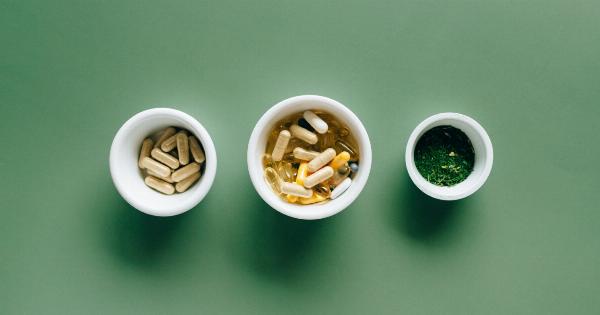Hypertension and diabetes are the two most prevalent metabolic syndromes that affect millions of people worldwide. Both conditions are characterized by chronic inflammation, which is a key driver of their pathogenesis.
Adopting a diet rich in anti-inflammatory foods can help to manage hypertension and diabetes, improve insulin sensitivity, and reduce the risk of associated complications.
The Link Between Inflammation and Hypertension and Diabetes
Inflammation is a natural defense mechanism of the body in response to injury or infection.
However, chronic inflammation, which is sustained over a prolonged period, can cause tissue damage and is implicated in the pathogenesis of several chronic diseases including hypertension and diabetes.
Inflammation can contribute to hypertension by promoting endothelial dysfunction, which is characterized by the impaired ability of blood vessels to dilate.
Endothelial dysfunction reduces blood flow to vital organs, including the kidneys, heart, and brain. It is also associated with oxidative stress, which damages blood vessels, leading to the formation of plaques and the development of atherosclerosis.
In diabetes, chronic inflammation contributes to insulin resistance, which is the hallmark of the disease. Insulin resistance occurs when the cells in the body become less responsive to insulin, leading to high blood sugar levels.
Inflammation can also contribute to the development of diabetic complications, including neuropathy, retinopathy, and nephropathy.
The Role of Anti-Inflammatory Foods in Managing Hypertension and Diabetes
Dietary factors play a crucial role in the regulation of inflammation in the body. Consuming a diet rich in anti-inflammatory foods can help to reduce chronic inflammation, thus promoting better management of hypertension and diabetes.
Fatty Fish
Fatty fish, such as salmon, mackerel, and sardines, are rich in omega-3 fatty acids, which possess potent anti-inflammatory properties.
Studies have shown that consuming fatty fish can help to reduce inflammation, improve blood vessel function, and reduce the risk of cardiovascular disease, which is a common complication of hypertension and diabetes.
Leafy Greens
Leafy greens, such as kale, spinach, and collard greens, are loaded with antioxidants and anti-inflammatory compounds. They are also rich in dietary nitrates, which can help to lower blood pressure by relaxing blood vessels and improving blood flow.
Berries
Berries, such as strawberries, blueberries, and raspberries, are packed with polyphenols, which possess potent anti-inflammatory properties.
They are also rich in fiber, which can help to regulate blood sugar levels and improve insulin sensitivity in people with diabetes.
Nuts and Seeds
Nuts and seeds, such as almonds, walnuts, chia seeds, and flaxseeds, are rich in healthy fats, fiber, and antioxidants.
Studies have shown that consuming nuts and seeds can help to reduce inflammation, improve blood sugar control, and lower the risk of heart disease, which is a common complication of hypertension and diabetes.
Turmeric
Turmeric is a spice that has been used in traditional medicine for centuries. It contains an active compound called curcumin, which has potent anti-inflammatory and antioxidant properties.
Studies have shown that consuming turmeric can help to reduce inflammation, improve blood sugar control, and reduce the risk of diabetic complications in people with diabetes.
Whole Grains
Whole grains, such as brown rice, quinoa, and oats, are loaded with fiber, which can help to regulate blood sugar levels and improve insulin sensitivity in people with diabetes.
They are also rich in antioxidants and anti-inflammatory compounds, which can help to protect against complications of hypertension and diabetes.
Ginger
Ginger is a spice that is commonly used in Asian cuisine. It contains an active compound called gingerol, which has potent anti-inflammatory and antioxidant properties.
Studies have shown that consuming ginger can help to reduce inflammation, improve blood sugar control, and reduce the risk of diabetic complications in people with diabetes.
Garlic and Onions
Garlic and onions are rich in organosulfur compounds, which possess potent anti-inflammatory properties.
Studies have shown that consuming garlic and onions can help to reduce inflammation, improve blood pressure control, and lower the risk of heart disease, which is a common complication of hypertension and diabetes.
Green Tea
Green tea is loaded with polyphenols, which possess potent anti-inflammatory and antioxidant properties.
Studies have shown that consuming green tea can help to reduce inflammation, improve blood sugar control, and reduce the risk of diabetic complications in people with diabetes.
Brightly Colored Fruits and Vegetables
Brightly colored fruits and vegetables, such as carrots, tomatoes, and bell peppers, are rich in antioxidants and anti-inflammatory compounds.
They are also rich in dietary nitrates, which can help to lower blood pressure by relaxing blood vessels and improving blood flow.
Conclusion
Managing hypertension and diabetes can be challenging, but adopting a diet rich in anti-inflammatory foods can help to improve insulin sensitivity, reduce inflammation, and prevent associated complications.
By including foods such as fatty fish, leafy greens, berries, nuts and seeds, turmeric, whole grains, ginger, garlic and onions, green tea, and brightly colored fruits and vegetables into your diet, you can promote better health and well-being.




























